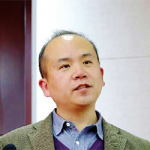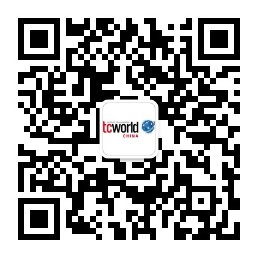You can also download the program and abstract in the PDF format.

Global companies grapple with the complexities of creating, translating, and delivering content to every customer, in every language, across all channels. For many, this process is entirely too manual, time-consuming, and costly. The secret to streamlining the content supply chain can be found in a new, more holistic approach to content. Cruce Saunders, founder of [A] – simplea.com, is the author of Content Engineering for a Multi-Channel World. His team provides cutting-edge content consulting to some of the largest companies in the world. He looks to the power of the [A] Content Intelligence Framework, AI, and a new operating model for content to transform and automate the content supply chain.
This opening keynote will investigate:

In a world where Google sets the gold standard for providing relevant search results, how can technical documentation teams create findability that is always spot-on for every single reader?
Relevance of search is determined by a combination of content metadata, contextual knowledge about the user, and the search query itself. The challenge therefore resides in collecting and analyzing these elements, and applying them systematically to every search query to create truly personalized search results.


In the digital transformation of information, it is inevitable that one of the questions we need to answer is: How does information keep abreast of customer interaction contacts to provide the best experience.
So,
How to match contacts and information?
How to do information experience architecture design and development?
How to evaluate and quantify the user experience and incorporate it into the devops process?
This topic focus on the practice and thinking in exploration of information experience.

Adobe CEO Shantanu Narayen recently said – “People buy experiences, not products.”
Almost every large company has recognized that it is in the customer experience business. Understanding the customer journey and brand interactions across channels and platforms and their impact on customer experience is crucial for creating a unified CX strategy. But too often, marketing and technical communication content silos and a cluttered IT landscape create disconnected content worlds in voice and tone, visual consistency, and unified accessibility. It’s a complex system coming with a lot of challenges.
In this presentation, Stefan Gentz, Senior Worldwide Technical Communication Evangelist at Adobe, will dive with you into the world of customer experience strategy and how to blend technical communication seamlessly into the digital experience world of today’s customers.



When the project schedule is tight, the information design used to improve user experience is often sacrificed. How to remove the wall in the mind? Another way is to use a tool that decouples software functions independently. It is an effective way to crack UA implementation problems and provides a broader imagination for digital, diversified, and intelligent user assistant design.
1. Provide users with personalized assistance,including traditional materials, intelligent materials (accurate personalized recommendations, guide guidelines, automated execution, etc.).
2. Through a specific tool and service platform, you can quickly develop all kinds of user-aware information
3. The product can be improved by “Let the software speak” according to the panorama trajectory analysis of a user’s behavior.


Founded in 2003, Sinoview provides enterprises with complete solutions for technical content writing, management, publishing and translation. We have both insight into future trends and strong development capabilities, so that companies not only have cretive ideas, but also have a proven practical solution.

The power of the digital world has changed the way companies interact with customers. Content drives customer journeys and streamlines experiences across touchpoints. However, to manage this content across channels and languages on a global scale, companies need to start from content leverage the advantages of structured content management across the content supply chain, applying best practices across creation, translation to delivery.
In this talk, you will learn more about how to overcome the limitations of traditional content creation and publishing. You will discover how new technologies optimize the customer experience through collaborative creation, taxonomy management, and dynamic publishing. You will also learn how a content supply chain approach can help companies meet their current and future content needs through intelligence and automation using structured content management.



Some technical documents are easy to read, while others are painful.What are the factors that bring about the differences in these reading experiences? The main role of technical text is to help users understand the information and then complete the task. Technical texts with a good reading experience should have the following characteristics: 1). Fast reading speed; 2). High mission completion rate; 3). Short task completion time; 4). Visual aesthetics; 5). Low cognitive load 6). Low degree of visual fatigue.
Various components of the text are likely to have an impact on the reading experience, such as row length, row height, font size, font, picture aspect ratio, title font size ratio at all levels, number of paragraphs, background color, and so on. This report will share our exploration of this issue and focus on sharing our empirical research on the impact of the element “row length” on the reading experience, mainly on research processes, experimental design and research tools (such as eye tracker, brain activities, skin activities), etc.

User-generated content (UGC) is a growing trend in technical writing. With the explosive uptake of Internet applications and cloud computing technologies, the way users obtain and use information is different from the past. This creates challenges for effective information development but also provides opportunities for progress.
How can you inspire users to communicate with your products and writers? How can experts contribute their best practices to your documentation? How can you make your content user-friendly and scenario-based? How can you make the value of the content measurable and visible?
Nowadays, documentation is not only there to help existing customers use the product; it can be a touchpoint for potential customers too. Through our bounty program, users can get involved in making contributions to the content, by editing documentation, or by making content proposals through crowdsourcing channels or technology communities.
China is investing heavily in Industry 4.0 technologies for its “Smart Factories” initiative – part of the “Made in China 2025” programme. But the various platforms and initiatives around the world for these technologies are saying very little about information.
This presentation shares the main points of the model known as Information 4.0, an informational response to Industry 4.0. This model was developed by the Information 4.0 Consortium, which promotes exchange between the worlds of technology and information development and management. The model represents our understanding of what is needed to effectively meet the informational needs of users faced with AI, IoT, Bionics, Augmented Reality, etc. We don’t consider this model as definitive or fixed, it is a living body that will evolve with changing needs.
The presentation focuses on two central notions:
High contextuality
Molecular information
New technological capacities, tied to mobile devices, wearables, and eventually implants, will make it so that context and content interact, change each other, and influence user behavior. Ultra-fine context sensing and personalisation cannot happen without AI, and information design must become molecular – chunked into very small units – to support it.
This also means that development technologies and the technology of information management and delivery need to be integrated at the moment of product design, with technical communicators inside product design teams. This is part of the theory of agile product design, but has not, so far, been well implemented.
In a place like China, where there is no long history of practice, there is a particularly good opportunity for leadership and innovation developing new practices adapted to the future. This kind of approach is also applicable to initiatives such as Smart Cities, another area where China is investing heavily.

Why are companies willing to invest a lot of resources in building TC teams and platforms?
How do TC people constantly tap into their own value and get full recognition?
How does external non-professional evaluation evolve into an internal professional evaluation?
How can big data be used to integrate management ideas?
The development direction of TC business and the future conception of a TCer
This presentation introduces the development of enterprise technical documentation in terms of personnel, technology and platform.
Structured writing is applied to a wide variety of writing approaches. Some say that most technical writing is “structured writing”, because the writing process is approached in a methodical structured way. According to this definition, all documents with some sort of structure must have been the result of a structured approach.
In this workshop, structured writing means a standardized, methodological approach to content creation incorporating systematic labeling, modular, topic-based architecture, constrained writing environments, and the separation of content and form.
This approach is the key to creating intelligent content, applying single sourcing strategy and a must-have mindset for CMS implementation.
Structured writing and DITA is frequently required in job descriptions. If you are an experienced writer seeking a promotion to be an information architect, this is a quick beginning.

ECM concept, value, and function.
ECM platform big picture view, establishment, project road sign, and operation.
ECM development trends.


As an important part of version delivery, the timeliness, accuracy and integrity of documents have always been a great challenge. After three years of accumulation, ZTE has established the DevOps platform for the entire document, covering the four systems of production, construction, consumption and feedback.
This theme covers:
(1) Document DevOps Delivery Value: How to bring the value of improving document development efficiency, reducing operating costs, shortening delivery cycle and improving customer satisfaction for internal and external users.
(2) Document DevOps support theory: three-tree model and DIKW model.
(3) Document DevOps core practices: collaborative development, continuous publishing, on-demand publishing, quality assurance, high availability, sustainable growth and other means and methods.




Is the device broken? Does it need replacement? Or can it be fixed in the field? These are questions your field service or your customers face sooner or later. We as technical documentation departments need to produce and deliver a wealth of information. But how do we provide fast, accurate and best fitting answers to actual challenges?
Technical documentation departments are torn between two poles. On the one hand they should provide accurate information in the most efficient manner in time. On the other hand traditional workflows producing PDF files to be printed no longer meet the demands of customers and field service providers. Structure content authoring is not only the state of the art way for efficient production of technical documentation. But can also be used as source of intelligent information to support customers and field service providers in far more ways than just lengthy manuals.
For example letting customers find the right answer rapidly via a self-service app. Or letting an interactive fault tree guide them through the decision making process of dealing with a support case. Others have experienced the benefits of ordering spare parts orders right the first time all the time. In Industry 4.0 environmental machine data can give operators as well as technicians actual advice on the actions to be taken in a certain context. Service technicians are more efficient if intelligent maintenance tables only show them the tasks to be done.
This talk investigates how SCHEMA’s customers excel in technical documentation and in service thanks to structured content authoring.

Measuring the success of technical writing deliverables has always been difficult. Now that we’ve transformed ourselves to “user assistance”, measuring the success based on how easy and how well the customers have been using the software could be one possibility.
Customer issues have always been an toll on the development resource. We’ve started an initiative to prevent recurring customer issues by transforming the help content. In the presentation, I will use examples to show how we transform the content: We’ve done analysis of our target audience’s real tasks, mapped content towards those tasks, and improved the structure and semantic tagging of our content to make it more discoverable and easier to consume.
To track the success of the content transformation, we have been monitoring the number of customer tickets and see how the transformed content actually makes an impact on the customer issues.



This workshop provides hands-on, practical techniques for applying cognitive science to User Assistance. Interactive exercises will demonstrate how to use learning theory to create useful information and build cognitive demand. We explore practical ways to plug the “black holes of knowledge” that come from our habit of going out to the web to get quick fixes for an urgent, immediate problem, again using interactive exercises that lead us to solutions. We’ll also debate, discuss, and brainstorm together.
Primary topics are:
Deductive Reasoning – you can figure it out yourself!
Gestalt: Filling in the gaps
Constructivism: where do users find meaning in UA?
Action-Learning and Cognitive Demand
What’s Competency got to do with connections?
Finding help and making it count through Connectivism
Learning by doing and generalisation
Does Your Content Strategy Include Your Product?
The Cognitive Spiral: Integrated Connective Competency
Learning is more Important than Knowing
Integrated Stakeholder Communities: creating value and re-injecting it into the system

Apart from the technology trend buzz words “AI” and “Big Data”, some localization companies go extra to provide the content one stop solution including content marketing, technical writing, design and video creation. The extra services are extremely important to enable China companies go global.
The biggest challenge to go extra is to find the overseas native speaker talents (content marketing mainly) and bring them to work onsite in China.
In this speech, WeiWei Cao will share Alibaba International User Experience best practices how to build up the remote and in-house resource pool to provide the seamless one stop content solution (content and design).


While “Agile” and “Continuous” are notions most often associated with software development-related activities, it has progressively impacted the way we define translation and localization processes, especially among software, gaming and ecommerce companies.
And if most organizations like to set this is as a mid- or long-term objective, it is however not a localization process that is recommended for all types of enterprises.

China GDP is huge today, but there are not so many famous globalized Chinese companies. What are the problems? What are the root reasons behind? How should the companies do to overcome the problems? What could other parties (service providers, third parties, etc.) do to help their customers become being really global?
In Jason’s observation, the reasons of issues are far beyond lacking of hands-on skills, instead, what’s more important is on deeper level, such as principles, structures, strategies, or even mindsets and value propositions. To really help those companies, it requires systemic thinking and full involvement of internal stakeholders and external expertise from TC, MarCom, L10n, I18n, etc.




In late 2018 Adobe released an entirely new generation of RoboHelp – developed from scratch, starting with code line one. In this hands-on workshop, Stefan Gentz, Senior Worldwide Evangelist for Technical Communication at Adobe, will introduce you to this new HAT powerhouse generation.
In this workshop you will:
– Get an introduction to the all-new user interface,
– learn how to configure RoboHelp 2019 for your needs,
– create a new project from scratch,
– import content from Microsoft Word and FrameMaker,
– create your first CSS3 Stylesheet with the new visual CSS designer,
– edit the XML-based HTML5 in the all-new source code editor,
– learn how to work with snippets, variables, and conditional text,
– learn how to re-use content, create micro-content, personalize content, and reuse content.
– experience the magic of “Responsive Authoring,”
– and finally, publish your project to Responsive HTML5 and PDF.
To take full advantage of the workshop, you may want to bring your own laptop and pre-install the new RoboHelp 2019. You can download a free and fully functional 30-day trial version here:
https://www.adobe.com/products/robohelp/download-trial/try.html

There’s a lot of talk about IoT and how global companies are heading there. Business models are changing as manufacturers and service organizations are looking to improve their aftermarket business thanks to predictive maintenance, as well as create new revenue streams.
But what does this mean for the technical communicator? What is his/her role in all of this? This presentation will:
• paint the big (IoT) picture and inform technical communicators and technical documentation managers on the crucial role technical documentation plays in this new landscape.
• help with further understanding about the impact of IoT on Service Information.
• and explain how a solid content strategy (allowing for dynamic and aug-mented service information delivery) combined with IoT strategies will improve the profitability in the service business in both the short and long term.


No more disconnect between the writing of code and the writing of documentation. Modern documentation can be written, published, and maintained using the same methods software code is developed. Docs processes become more agile and more approachable for developers.
In this presentation, Robert Kratky will talk about tech writing workflows that include editing plain-text formats, collaborating through version-control repositories, running custom scripts for validation checks, and automating docs deployment.
Is it for you? How can you benefit from adopting a process that treats docs as programmers treat software source code? Come and learn about it!

With 5G, Internet of Things, and products interacting with each other, there will be new expectations on Technical Information and content producers. The combination of Industry 4.0 and Content 4.0 will be challenging. We have to be smart in how we communicate technology, and how we use the produced product data and knowledge gained. Nate will talk about strategies, research, and standards that will be important for the future of TC. He will share findings and current expectations from customers – this will also cover presentation formats for future generations and how the role of a Technical Communicator will evolve.
Nate will share results from recent research projects that they have been involved in and give information about research projects they are about to start. He will also share their sources for business analysis so you can follow the trends yourselves; for example industry standards, podcasts, and communities.

Communication issues remain a pain for TWs regardless of their industry: hard to get input from a developer, difficult to get review feedback from a Product Owner, sometimes even harder to speak the same language as the R&D people.
This panel discussion sheds lights on how to correctly communicate and interact with an R&D people, from the perspective of a developer, a product owner, and a quality assurance engineer.
The topic covers the following:
– My role and my job responsibilities, part of my work requires communication with a TW
– My pain points or frustrations when a conversation occurs between a TW and me, examples provided
– My suggestions and expectations towards a TW in terms of communication, for example, how to get information efficiently?


As we transition from traditional graphical user interfaces to web-based applications, and more recently to conversational user interfaces, the challenges have changed; and so has the definition of good copy. It is important to understand narrative and conversational design to be able to convert product requirements into a clear and engaging user story. As a technical communicator, you must showcase an inventor’s spirit, highly refined aesthetic sensibilities, and a fine-tuned ability to contextually communicate the right message in the right place at the right time. When people read content that is of a conversational tone, it gives them a feeling that they’re being spoken to directly.
The essence of good copy is to turn every message in your product into a valuable conversation. You can keep these tips in mind:
Copy must contain useful data but must not be poorly presented
Copy must be presented in a visually amazing way but not show the lack of meaning and purpose.
You must keep a good balance between words and graphics, and make them work together. You must aim to make your words more approachable and less arduous for your readers. By using both empathy and logic to design your product, you must play the pivotal role of endorsing the product with not just good but great copy.
As a technical communicator, you can expand your portfolio by being an advocate for your product’s design. You can work towards shaping product experiences by creating useful, meaningful copy and drive cohesive product narratives across multiple platforms and touch points. You must advocate the design you want to see in your user interface by creating not just good but great copy.

Quan’s presentation focuses on accessibility for disabled users in technical communication. As technology democratizes information resources, an increasing number of disabled persons require accessible documents, websites, and content. In the U.S., there were 814 web-accessibility lawsuits in 2017 and more than 1000 in the first half of 2018 (Bureau of Internet Accessibility, 2018). Improving accessibility of information is not only ethical but also vital.
Quan’s talk addresses the following three aspects: Accessibility-related policies, important professional and corporate guidelines, and accessibility techniques. First, he gives an overview of policies including Americans with Disabilities Act (ADA) and Section 508 of the Rehabilitation Act (Federal Electronic and Information Technology). These policies largely guide the practice of information and Web accessibility and provide valuable lessons for developing markets like China. Quan introduces widely-adopted professional guidelines, with a focus on the Web Content Accessibility Guidelines (WCAG) by the W3C. He discusses how visual, motor, auditory, and cognitive disabilities affect information use and key techniques to eliminate barriers of information access.
Technical communicators work in a wide variety of settings and with a variety of document medium and genres. Quan’s talk aims to raise awareness of accessibility among technical communicators, provide a professional framework for reference, and offer helpful tips. It is his bigger hope that Chinese technical communicators would examine how accessibility applies to their work and advocate for accessibility.
Reference:
2018’s flood of accessibility lawsuits. Bureau of Internet Accessibility. https://www.boia.org/blog/2018s-flood-of-accessibility-lawsuits

The focus of the study is the professional communication happening between designers and clients during the course of conducting a design project. A design project is never an easy task in terms of communication because 1) it usually involves in multiple stakeholders, therefore, each party holds its own value, interest, perspective, expectation, and level of knowledge and expertise which can cause potential conflicts; and 2)it is also likely to take multiple development stages, with each stage has different objectives and work that cannot be achieved without consensus or compromise among clients and designers. How do designers communicate their plan, approach, rationales, and concerns to the clients? How do designers respond to clients’ demands? Can designers uphold their value while adjusting to clients’ business needs?
In this study, the researcher seeks to provide insights with three cases. The first designer is practicing service design in Finland, the second one is an interior designer who works for a Vietnamese furniture company, and the third one is a UX designer based in China. Each of the participating designers work with a specific group of clients of distinctive demands, and the communication varies profoundly in local contexts. The analysis and discussion will include three aspects: the communication challenges designers encounter, the role of technical communication in designer-clients relationship, and designers’ awareness and use of technical communication.
It needs to be noted that this is a study at its preliminary stage. The long-term goals include providing support to working professionals with regards to workplace communication and exploring the possibility of applying technical communication education in university departments like Design and Engineering. The researcher intends to share primary data including narratives and interview responses with the hope of sparking feedback and critique from the audience.

Finally, there are the User Interface Designers and the Graphic Artists in the UXD team. ‘Who are these upstarts to encroach on our territory?’
So, will this presentation be a ‘eat less, exercise more’ list of obviousisms? No. It’ll simply be a TW-to-UXW walkthrough using two case studies. I’ll show the path, but you will have to walk it yourself.
Download the program as PDF here.
The premier gathering event for all decision-makers and specialists in the field of technical communication in China.
WeChat Official Account:
